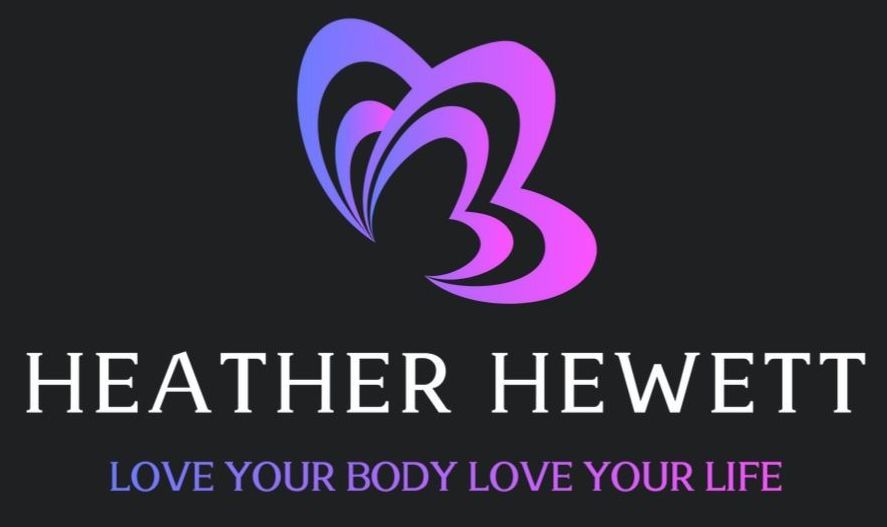What is Somatic Awareness and How Can It Improve Your Well Being in 2025
Somatic awareness is the practice of connecting with and understanding the physical sensations of your body. It involves mindfulness techniques that help individuals release stored tension, foster emotional clarity, and improve mental and physical health. By incorporating practices like somatic mindfulness, somatic bodywork, and somatic breathing, individuals can address unresolved emotional issues, improve their mental clarity, and enhance physical well-being. This comprehensive guide explores the significance of somatic awareness, its benefits, and practical techniques for incorporating it into your daily routine, as well as its applications for emotional healing, trauma recovery, and stress management.
The need for holistic practices in managing emotional and physical well-being has become more pronounced in recent years. As our lives become increasingly fast-paced and stressful, more individuals are turning to methods that address the body and mind’s interconnectedness.Somatic awareness, a practice rooted in the idea that the body holds onto emotions and stress, is gaining widespread popularity for its ability to help individuals reconnect with themselves in profound ways.
In this guide, we will explore how somatic awareness can promote emotional clarity, alleviate physical tension, and foster a sense of inner balance. Techniques such as somatic mindfulness, somatic bodywork, and somatic breathing can help you better understand the sensations within your body, allowing you to heal emotional wounds, reduce stress, and develop a greater sense of presence. Whether you are new to somatic practices or seeking to deepen your existing practice, this comprehensive guide will provide you with actionable steps to integrate somatic awareness into your life.
Why Somatic Awareness Matters in 2025
Somatic awareness is not a new concept, but its relevance and importance have grown as the world becomes increasingly aware of the link between emotional well-being and physical health. Today, mental health issues like anxiety, depression, and trauma-related disorders are at an all-time high, and conventional treatments are often insufficient in addressing the physical manifestations of these conditions. This is where somatic awareness steps in.
In 2025, the focus is on holistic approaches to well-being, and somatic practices are gaining recognition for their ability to address the mind-body connection. When we experience emotional distress or trauma, the body often holds onto these experiences in the form of tension, pain, or discomfort. Somatic awareness enables us to release this trapped energy and return to a state of emotional balance.
According to a study from the National Institute for Health, somatic practices such as somatic mindfulness and body scanning have been shown to reduce symptoms of anxiety and PTSD by improving the way individuals manage stress and emotional triggers. This is why somatic awareness is an essential tool in 2025 and beyond.
The Science Behind Somatic Awareness
Understanding the science behind somatic awareness helps to appreciate its effectiveness. The concept of somatic awareness is grounded in neurobiology, psychology, and trauma research. The polyvagal theory by Dr. Stephen Porges, for example, explores how the autonomic nervous system (ANS) governs our responses to stress and trauma. According to the theory, when we are under stress, the ANS becomes dysregulated, leading to physical and emotional reactions such as shallow breathing, muscle tension, and emotional numbness.
Somatic practices like somatic breathing and body scanning help regulate the ANS by promoting the parasympathetic nervous system (PNS) response. This system is responsible for calming the body and restoring balance. When we practice somatic awareness, we encourage the PNS to override the stress response, leading to emotional healing and physical relaxation.
Additionally, somatic bodywork techniques, such as the Feldenkrais Method and Rolfing, involve using touch and movement to release physical tension stored in the muscles and tissues. These techniques help promote better posture, reduce pain, and facilitate deeper emotional processing.
Key Benefits of Somatic Awareness
1. Emotional Clarity and Regulation
Somatic awareness allows individuals to connect with their emotional states in a way that is more direct and less analytical. By focusing on physical sensations, individuals can become more aware of the emotions underlying their experiences. This mindfulness practice provides a safe space to acknowledge and process emotions, helping individuals respond thoughtfully rather than react impulsively.
2. Trauma Healing
The body often holds onto trauma in ways that the conscious mind is not fully aware of. Somatic awareness helps to release this trapped trauma, allowing individuals to process and heal from past emotional wounds. A Technique like Somatic Experiencing (SE) is specifically designed to help individuals work through trauma by focusing on the body’s sensations and responses.
3. Stress Reduction
By practicing somatic awareness, individuals can reduce the physical tension associated with stress. Somatic breathing and body scanning help activate the body’s relaxation response, lowering cortisol levels and promoting a sense of calm and ease. These practices are especially useful in high-pressure environments where stress levels tend to rise.
4. Improved Physical Health
Somatic practices go beyond emotional well-being to improve physical health. Many people carry tension in their muscles, joints, and organs as a result of stress and poor posture. Somatic bodywork techniques such as Rolfing and Alexander Technique help release this tension, improving flexibility, mobility, and overall body function. Somatic practices can also help with chronic pain management by promoting greater body awareness and improving alignment.
5. Mind-Body Connection and Presence
Somatic awareness promotes a deep connection between the mind and body. As individuals become more attuned to their physical sensations, they develop a greater sense of presence and mindfulness. This practice encourages living in the moment, reducing distractions and enhancing overall well-being.
How to Practice Somatic Awareness: Step-by-Step
Integrating somatic awareness into your daily life doesn’t require specialized training or equipment. With consistent practice, you can start experiencing the benefits right away. Here’s a step-by-step guide to help you get started:
1. Somatic Breathing
Goal: Ground yourself and bring awareness to your body.
Step 1: Find a comfortable position, either sitting or lying down.
Step 2: Take deep, slow breaths. Breathe in through your nose, allowing your abdomen to expand, and exhale slowly through your mouth. Focus on the sensation of your breath moving in and out of your body.
Step 3: As you breathe, pay attention to areas of tension or discomfort in your body. Imagine the breath flowing into those areas and releasing the tension as you exhale.
Tip: Practice somatic breathing for 5-10 minutes each day to develop a strong foundation of relaxation.
2. Body Scanning
Goal: Increase body awareness and identify areas of tension.
Step 1: Close your eyes and take a few deep breaths to center yourself.
Step 2: Begin at the top of your head and slowly move your awareness down your body, paying attention to each area. Notice any sensations, whether they’re tight, relaxed, or neutral.
Step 3: When you find areas of tension, take a moment to breathe into those areas and allow them to soften or release. If your mind begins to wander, gently bring your focus back to the sensations in your body.
Tip: Perform a body scan once or twice a day, especially during moments of stress or anxiety.
3. Gentle Movement and Stretching
Goal: Release physical tension and promote relaxation.
Step 1: Begin with gentle stretches, paying attention to how your body feels as you move.
Step 2: Focus on areas of tightness and engage in slow, mindful movements to release that tension.
Step 3: As you stretch, notice how the sensations in your body change. Allow the movement to be fluid and free, rather than rigid.
Tip: Incorporate stretching or gentle movement into your daily routine. Practices like somatic stretching are ideal for combining mindfulness with body movement.
4. Mindfulness and Emotional Awareness
Goal: Develop a deeper connection with your emotional states.
Step 1: After completing your breathing or body scanning, take a moment to check in with your emotions. Notice how you feel physically, emotionally, and mentally.
Step 2: If any emotions arise, observe them without judgment. Notice where in your body you feel these emotions.
Step 3: Allow the emotions to move through you, without trying to change or suppress them. If necessary, use deep breathing to help release any emotional tension.
Tip: Incorporate mindfulness into your daily activities, such as walking, eating, or even talking with others. This helps you remain present and connected to your body.
5. Reflection and Letting Go
Goal: Process and release any remaining tension or emotions.
Step 1: After your somatic practice, take a few moments to reflect on the experience. How did you feel? What sensations or emotions came up during the practice?
Step 2: Allow yourself to let go of any residual tension or negative feelings. You may choose to journal about your experience or simply acknowledge and release them.
Tip: End your practice with a moment of gratitude or relaxation to seal in the benefits of the session.
Common Mistakes and How to Avoid Them
When starting somatic awareness practices, it’s easy to fall into common traps. Here are some mistakes to watch out for:
Forcing Sensations: It’s important to let sensations arise naturally. Avoid forcing yourself to feel a certain way or expecting immediate results.
Skipping Breathwork: Breathwork is the foundation of somatic practices. Without focusing on your breath, it’s easy to become disconnected from your body. Always begin with deep breathing to ground yourself.
Rushing the Process: Somatic awareness is a gradual process. Avoid rushing through exercises or expecting instant breakthroughs. Allow your practice to unfold at a natural pace.
Neglecting Emotional Release: Somatic practices can bring up deep emotional material. Don’t avoid or suppress these emotions. Acknowledge them and let them flow through you.
Top Tools or Resources for Somatic Awareness
Several resources can help deepen your somatic practice. Here are some of the best tools and methods for integrating somatic awareness into your life:
Somatic Experiencing (SE):
A therapeutic approach for trauma healing developed by Peter Levine. SE helps individuals release stored trauma through body awareness and movement. More information is available at
Somatic Experiencing.
BodyMind Centering (BMC):
BMC is
a somatic movement practice that emphasizes body awareness and movement integration. It’s excellent for fostering a deeper connection between mind and body. Learn more at
BodyMind Centering.
Feldenkrais Method:
A somatic therapy that uses gentle movement to improve body awareness and alignment. The Feldenkrais Method can be particularly helpful for individuals dealing with chronic pain or physical tension.
Headspace App:
Headspace offers mindfulness exercises that include somatic breathing and body scanning, helping users develop body awareness in a structured, guided manner. Download Headspace at
Headspace.com.
Rolfing Structural Integration:
Rolfing is a type of deep tissue bodywork that helps release tension, improve posture, and enhance overall body awareness. Visit the
Rolfing Association for more information.
Frequently Asked Questions
1. What is the difference between somatic awareness and mindfulness?
Somatic awareness is a specific practice that focuses on the physical sensations of the body, while mindfulness is a broader practice that includes awareness of thoughts, emotions, and the environment. Both complement each other and enhance emotional well-being.
2. Can somatic awareness help with trauma healing?
Yes, somatic awareness is an effective tool for trauma healing. By focusing on the body’s sensations, individuals can release stored trauma and process emotional wounds that are held in the body.
3. How do I start a somatic awareness practice?
Start by incorporating simple techniques like deep breathing, body scanning, and mindfulness into your daily routine. Begin with short sessions and gradually build as you become more comfortable.
4. Is somatic bodywork helpful for chronic pain?
Yes, somatic bodywork techniques like Rolfing and the Feldenkrais Method can help alleviate chronic pain by improving body alignment, releasing muscle tension, and promoting overall relaxation.
About the Author
Heather M. Hewett is a seasoned practitioner in holistic health and emotional wellness, bringing over 22 years of experience in the fields of Naturopathy, Clinical Nutrition, and Health Coaching. As a Double Board-Certified Traditional Naturopath and Clinical Nutritionist, Heather has dedicated her career to guiding individuals toward transformative healing and self-discovery.
Having personally overcome challenges related to food addiction and significant weight gain, Heather's journey is a testament to resilience and the power of holistic healing. Through her experiences, she has developed a compassionate and integrative approach that addresses the mind-body connection, emphasizing the importance of somatic awareness in emotional regulation and overall well-being.
Heather is the founder of HeatherMHewett LLC, where she offers personalized coaching services, including the "Love Your Body, Love Your Life" program. This program focuses on nurturing a positive relationship with food and the body, integrating principles of somatic mindfulness, emotional resilience, and stress management. Her work is particularly beneficial for individuals seeking to break free from limiting beliefs and embrace a life of vitality and authenticity.
In addition to her coaching practice, Heather is the host of The Butterfly Event Podcast, where she shares insights on emotional intelligence, behavior change, and somatic approaches to healing. Through her podcast, she provides listeners with practical tools and strategies to navigate life's challenges and foster emotional fitness.
For more information or to connect with Heather, visit her website at heathermhewett.com.





